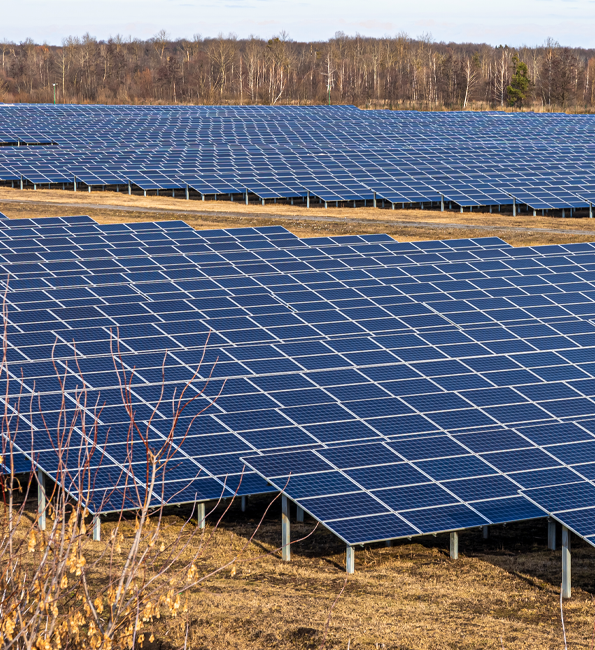
Net Metering Policy
Solar Net Metering Concept
What is Net Metering?
How does Net Metering Work?
1. Value addition to DISCOMs: One of the biggest advantages of Net Metering is that it helps trim peak load demand during the day and reduces load shedding. Further it helps State DISCOMS reduce their T&C wheeling losses.
2. Value addition to end-users: Net Metering helps corporates, industrial establishments and educational research institutes save money on electricity bills. The money saved can be invested into in their existing business or can be used to improve educational infrastructure in universities and schools.
Major challenge with net metering policy in India is that:
While many states in India have created net metering policies, the implementation has almost been universally slow and there are arbitrary constraints and limits. For example, some states don’t allow net-metering for HT power consumers i.e. large off-takers of power and in most states, there is a cap on the size of the solar plant that can be availed under net metering.
Many industries have lots of idle space on roofs which can be used for solar plants. But very few do so because of several issues, one of them being unfriendly net-metering rules. Rooftop solar sector has not really taken off mainly due to the poor implementation of net metering policy.
Despite these challenges, CleanMax has helped 150+ corporates in India in their solar journey – making us India’s leading Solar Company.
| States | Year of Release of Net Metering policies | Gross / Net Metering | Specifications on capacity | Specifications for grid integration (electricity or power) | ||||
|---|---|---|---|---|---|---|---|---|
| Range allowed | Max. capacity w.r.t sanctioned load | Limitations on transformer capacity | Export of electricity allowed when compared to consumption | Billing period for settlement | Compensation period for surplus | |||
| Maharashtra | 2015 | Net | 1 kW–1 MW | 100% | 40% | Above 100% | Monthly | Yearly |
| Uttar Pradesh* | 2019 | Both | 1 kW–1 MW | 100% | 25% | Above 100% | Monthly | Yearly |
| Rajasthan | 2015 | Net | 1 kW–1 MW | 80% | 30% | Above 100% | Monthly | Yearly |
| Karnataka | 2016 | Both | 1 kW–1 MW | 100% | 80% | Above 100% | Monthly | Monthly |
| Haryana | 2016 | Both | 1 kW–1 MW | 100% | 30 % for LT and 15% for HT | Above 90% | Monthly | Yearly |
| Tamil Nadu | 2019 | Net | Consumers under Low Tension category except Hut and Agricultural category of tariff – Not sure | 100% | 90% | 90% | Bi-monthly | Yearly |
| Delhi | 2014 | Net | 1 kW – NA; for group / virtual metering 5 kW – 5 MW | 100% | 20% | Above 100% | Monthly | Yearly |
| Telangana | 2016 | Both | 1 kW–1 MW | Residential: 100% Others: 80% | 80% | Above 100% | Monthly | Half-yearly |
| Gujarat | 2016 | Both | 1 kW–1 MW | Residential- Above 100%; Non- residential 50 % (for initial two years) | 65% | Above 100% | Monthly | Yearly |
| Andhra Pradesh | 2015 | Both | 1 kW–1 MW | 100% | 80% | Above 100% | Monthly | Quarterly |
| West Bengal | 2013 | Net | 5 kW–not specified | NA | NA | 90% | Monthly | Yearly |
| UTs – Andaman & Nicobar, Chandigarh, Dadar and Nagar Haveli, Daman & Diu, Lakshadweep, Puducherry | 2019 | Both | NA–500 kWp; for group/ virtual net metering 5 kWp–NA | 100% | 75% | Above 100% | Monthly | Yearly |
| Madhya Pradesh | 2015 | Net | NA–1 MW | 100% | 30%, as per amendment in 2017 | Above 100% | Monthly | Yearly |
| Punjab | 2015 | Net | 1 kW–1 MW | 80% | 30% | 90% | Monthly | Yearly |
| Jammu and Kashmir | 2015 | Net | 1 kW–1 MW | 50% | 20% | 90% | Monthly | Yearly |
| Orissa | Amended in 2018 | Net | Up to sanctioned load | 100% | 75% | 90% | Monthly | Yearly |
| Kerala | 2014 | Net | 1 kW–1 MW | NA | 80% | Above 100% | Monthly | Yearly |
| Assam | 2015 | Both | 1 kW–1 MW | 80% | 20% | 90% | Monthly | Yearly |
| Jharkhand | 2015 | Both | 1 kW–1 MW | 100% | 100% | Above 100% | Monthly | Yearly |
| APPC | Average Power Purchase Cost |


